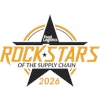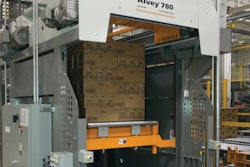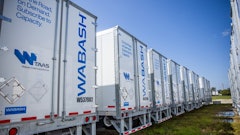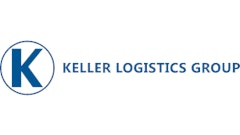
As globalization continues to propel U.S. food companies’ supply chains further overseas, sourcing, transportation, and coordination of imports and exports is becoming more complex.
Likewise, the demands—and opportunities—for lead logistics providers (LLPs) to manage various 3PLs and supply chain activities are growing in lockstep.
“We think this is a primary opportunity for companies to take a long, hard look at world class logistics providers,” says Chris Ferrell, director at the Tompkins Supply Chain Consortium. And, if companies aren’t outsourcing all of their logistics, then it’s advisable to “partner with a logistics provider to bridge the knowledge gap” that’s inherent when companies’ supply chains are expanding globally, he says.
The Tompkins Supply Chain Consortium, which is comprised of over 500 retail, manufacturing, and wholesale/distribution companies, provides supply chain benchmarking and best practices knowledge. It recently partnered with FoodLink, an online network for fresh food retailers, wholesalers, and suppliers, to give FoodLink’s perishable goods suppliers access to the Consortium.
Although many large food companies have already expanded globally and conduct a fair amount of manufacturing and distribution in foreign markets, when compared to other global companies in sectors such as electronics and apparel, for example, the volumes that they’re shipping are rather small in comparison, Ferrell notes.
“In the food space, all except the most knowledgeable have a limited experience relative to similar sized counterparts,” he explains.
Looking overseas for growth
A big reason that U.S. food companies are looking overseas for growth is that developed markets, including the U.S., are not expanding as rapidly as emerging markets.
Larger food companies have begun noticing that they’re not getting the growth numbers they’re looking for from their current customers, says Ferrell, “and they’re not going to get it by taking market share away from their current competition either. They realize they need to look to places that represent new opportunities.”
Ferrell calls it the “Westernization” of economies in Asia, and with a growing middle class, increasing levels of disposal income, and a growing appetite for more prepared and packaged foods, the prospects are plentiful, he says.
In fact, H.J. Heinz Company’s second quarter 2011 earnings report showed that emerging markets delivered 15.8 percent organic sales growth and represented 20 percent of total company sales, and substantiated Ferrell’s observations about characteristics of developed markets versus emerging markets.
“Led by our trio of growth engines—emerging markets, global ketchup, and our top 15 brands—reported sales grew more than 8 percent and Heinz delivered organic sales growth for the twenty-sixth consecutive quarter, despite the challenging economic environment in developed markets, especially in Australia and U.S. foodservice. Overall, we saw a combination of continued strength in emerging markets, the UK, and much of Europe, and mixed results in other developed markets, where consumer confidence fell to its lowest level in 30 years,” stated William R. Johnson, the company’s chairman, president, and CEO.
“Our acquisitions in Brazil and China provide new platforms for delivering sustainable growth in a rapidly changing world where billions of consumers in emerging markets are discovering the quality, value and convenience of packaged foods,” the company said in a statement last year.
“In April 2011, we acquired our first major business in Brazil, the world’s fifth most populated country, by purchasing an 80 percent stake in the manufacturer of Quero, a rapidly growing brand of tomato-based sauces, ketchup, condiments, and vegetables with annual sales of approximately $325 million.”
Heinz acquired China’s Foodstar, a leading maker of premium soy sauce and fermented bean curd with annual sales of nearly $100 million, in November 2010.
“Foodstar gives us a solid platform in China’s rapidly growing $2 billion plus retail soy sauce market, where its Master brand holds a strong position, especially in southern China. Following a smooth integration, Foodstar’s sales have exceeded our expectations. We plan to sustain the growth momentum by launching new products, expanding distribution across China and completing Foodstar’s new factory in Shanghai to meet increased demand. Foodstar is expected to increase our company’s annual sales in China to more than $300 million in fiscal 2012.”
The company added that, “China represents a significant growth opportunity given its 1.3 billion consumers and importance as the world’s second-largest economy after the U.S.” Furthermore, “The acquisitions in Brazil and China put emerging markets on track to generate more than 20 percent of our company’s total sales in fiscal 2012, up from 16 percent in fiscal 2011. The acquisitions are the latest examples of our successful ‘buy and build’ strategy in emerging markets, where we have acquired and grown strong local brands and businesses in the key markets of China, India, Indonesia, Russia, Poland, and now Brazil.”
Regulations, recalls, and trends
Food companies are dealing with more regulations, particularly those associated with the Food Safety Modernization Act (see sidebar “The FSMA’s Hidden Land Mines”). At the same time, responding to recalls also requires more sophisticated logistics capabilities and enhanced visibility, which is the expertise of lead logistics providers.
According to Ferrell, “Food companies are having to reevaluate their systems and update their processes from a compliance perspective,” in order to respond to more regulations, potential recalls, and emerging trends in the sector.
For starters, a recent forecast from Tompkins, entitled “Strategies to Transform Your Supply Chains in 2012 for the Food & Beverage Industry,” stated that companies in this sector are “now cautiously optimistic as they look to 2012. At Tompkins International, we see 2012 bringing a number of trends that will emerge—some familiar and some new.”
Some highlights of the forecast include the following:
Demand-driven supply chains (DDSC). Demand-driven supply chains allow for huge potential for better cost reduction and more satisfied customers. By reporting to each link in the supply chain what true and current demand exists in the market, an accurate response via increased inventory or more frequent deliveries keeps supply in tune with demand. These transformations are opening supply chains up to extraordinary benefits and major value creation.
Focus on food safety. Food safety will continue as a hot topic in 2012. The need for consumers to feel that their food supply chains are safe will continue to drive food safety initiatives. Retailers and food producers understand the importance of quickly reacting to a recall to ensure their brands are not tarnished and to reduce the financial risk to their businesses. The Product Traceability Initiative (PTI), along with other initiatives, will ensure food and beverage companies have the visibility to limit risk.
In China for China. More and more Western companies with operations in China are moving to serve markets within China itself. The country’s emerging consumer market is being driven by a growing middle class that is purchasing food and beverage products. Local and global food and beverage companies are taking advantage of this new market and its huge growth potential.




















